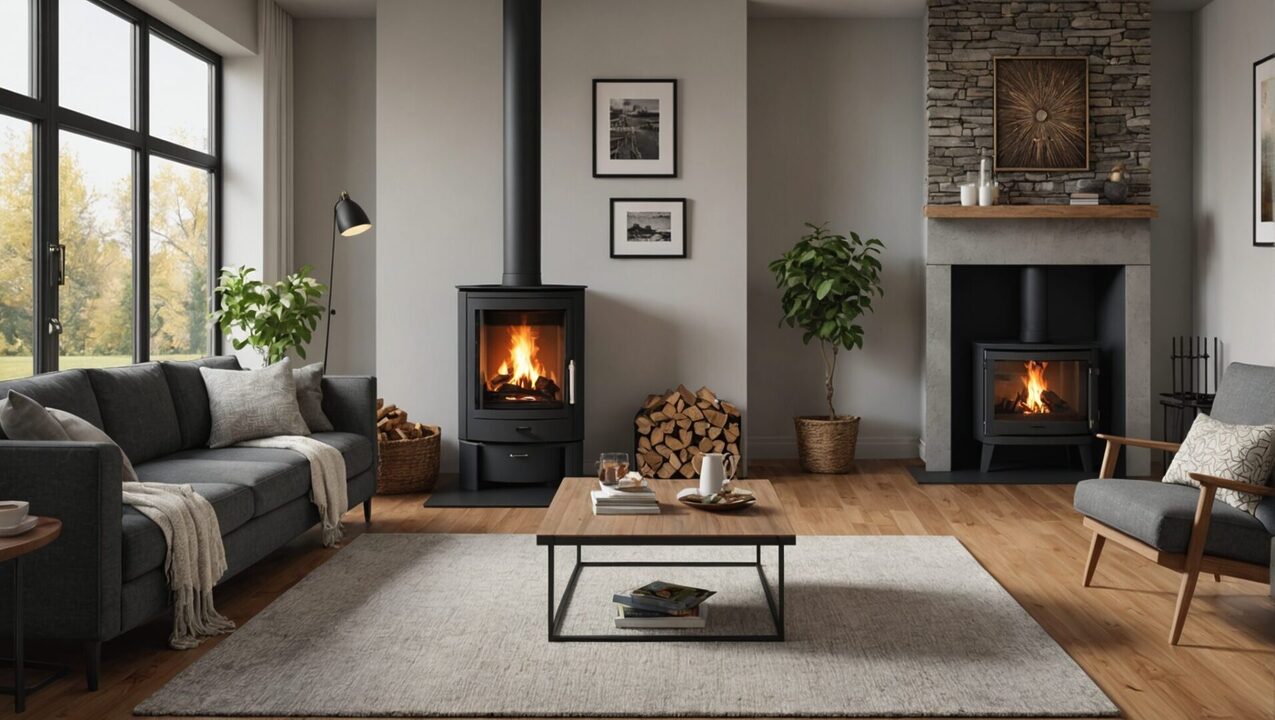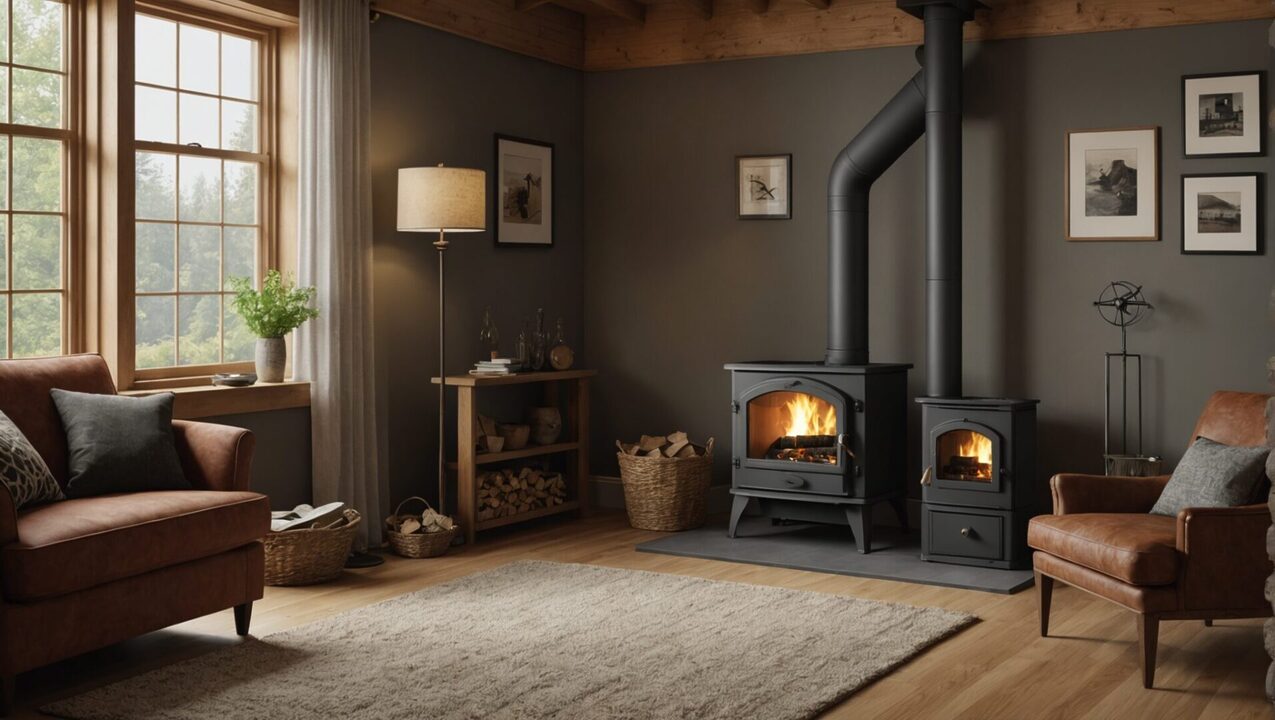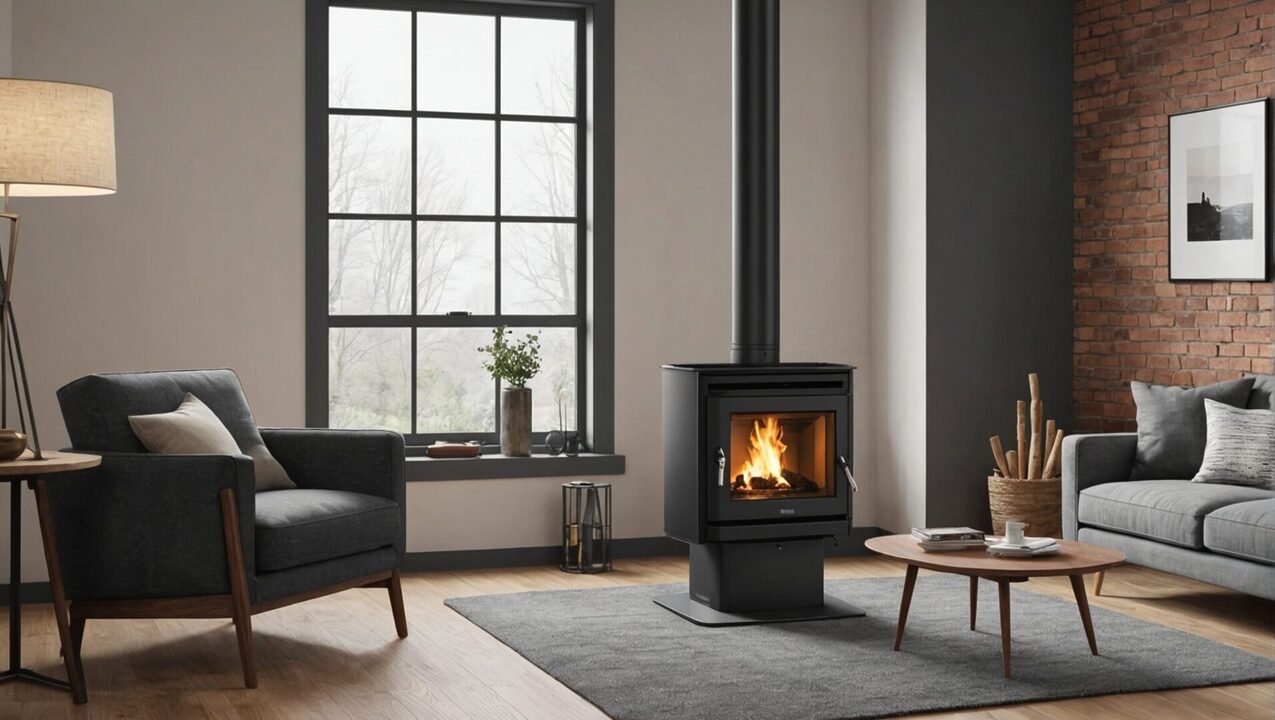There are several types of pellet stoves on the market, adapted to various needs and habitat configurations:
- Ventilated stove : Equipped with a fan to diffuse heat quickly throughout the room.
- Convection stove : Warms the air naturally thanks to the circulation of air around the stove.
- Ductable pellet stove : Equipped with an additional fan for heating adjacent rooms.
- Hydro pellet stove : Used for central heating, it produces heat for hot water.
- Closed fireplaces and pellet inserts : Integrated into an existing fireplace, offering an open fire aesthetic while maximizing energy efficiency.

Heating by pellet stove is an increasingly popular solution for its energy efficiency and its ecological advantages. These devices, powered by wood pellets, offer a modern alternative to traditional cheeks. Whether you are in the consideration phase or already have a project in mind, it is important to explore the different types of pellet stoves available on the market. This article provides an overview of the options, as well as practical tips for making the choice that best suits your needs.
Ventilated pellet stoves
Operation and characteristics
THE ventilated pellet stove is one of the most common models. Equipped with a fan, it diffuses heat in a circular manner in the room where it is installed. Its operation is based on controlled combustion of the pellets, offering satisfactory energy efficiency while respecting environmental standards. The use of a fan allows a rapid rise in temperature and, consequently, increased thermal comfort.
Advantages and disadvantages
Among its many advantages, we can cite its purchase cost, which is often lower than other types of stoves, as well as its simplicity of installation. Additionally, its ability to quickly heat a space makes it a popular choice for harsh winters. However, the noise generated by the fan can be an inconvenience for some users, especially those looking for a calm and quiet atmosphere.
Sur le même sujet :
Convection stoves
Operation and efficiency
Unlike the ventilated model, the convection stove does not have a fan. This device relies on the natural circulation of hot air, which can reduce the speed of the temperature rise. The principle remains the same: the pellets are burned in a fireplace, and the heat emitted spreads throughout the room.
Distinctive features
The main advantage of the convection stove is its quiet operation, ideal for living spaces. In addition, it requires less maintenance, as the absence of a fan reduces dust accumulation. However, the heating time is generally longer, and to obtain even heat, it may be necessary to install several devices in a large house.
Sur le même sujet :
Ductable pellet stoves
Use and benefits
THE ductable pellet stove stands out for its ability to heat several rooms using a duct system. Equipped with a powerful fan, it helps move warm air to adjacent rooms, improving the overall heating efficiency in a home.
Additional Considerations
This option is particularly interesting for large homes or open spaces. Although its installation cost is higher, the thermal comfort it provides often justifies this investment. That said, installing ducts can represent a constraint for some homes, making this option less accessible in certain cases.
Sur le même sujet :
The hydro pellet stove
Operating principles
THE hydro pellet stove is an innovative option for those looking to integrate their heating system with their home’s hot water network. It works like a boiler, producing hot water which can then be distributed to radiators or an underfloor heating circuit.
Advantages over other types
This solution combines the comfort of central heating and the efficiency of a pellet stove. The hydro stove is particularly appreciated for its versatility and exceptional energy efficiency. However, its installation cost and maintenance can be significant, which could discourage some future buyers.
Sur le même sujet :
Closed fireplaces and pellet inserts
Aesthetic and practical solutions
For those who wish to renovate an old fireplace or integrate a pellet stove in a more traditional style, a closed hearth or a pellet insert can be an excellent option. They blend easily into any interior while providing efficient and pleasant warmth.
Points of attention
The installation of these devices often requires additional work, particularly in terms of ventilation and smoke evacuation ducts. Additionally, their installation cost can be prohibitive for some budgets. However, the aesthetics of a stove integrated into a fireplace can be a convincing argument for many customers.
Sur le même sujet :
Pellet stoves without electricity
An alternative operation
People living in areas with unreliable electricity may be interested in pellet stoves without electricity. These models operate autonomously using gravity and natural air circulation, eliminating the need for a power outlet.
Advantages and limitations
The simplicity and autonomy of these devices have many advantages. Their installation is often easier and less expensive. However, the efficiency and level of thermal comfort may be lower compared to an electric model, which limits their use in certain situations.
Sur le même sujet :
Choosing the right type of pellet stove
Needs analysis
Before making a choice, it is crucial to carefully analyze your specific heating needs. A heat balance can be useful to define the power required and consider which type of stove will be most suitable. For example, for a small surface area, a ventilated stove could suffice, while for a larger space, a ductable stove would be more appropriate.
Budget and investment
The budget also plays a central role in the decision. Prices vary considerably between different types of stoves, and it is important to consider not only the purchase cost, but also the installation and maintenance costs. In the long term, a more expensive but high-efficiency model could prove more economical.
Sur le même sujet :
Pellet stove brands
Which brand to choose?
The choice of brand is a factor of trust and quality. Reputable brands like Rika, Austroflam, Nobis, And Klover offer a complete range with various options, from power to technical characteristics. Additionally, it is advisable to check user reviews and product ratings on platforms likeUFC-Que Choisir or other comparators.
Standards and certifications
The importance of labels, such as Green Flame, should not be neglected. Choosing a labeled pellet stove guarantees high energy efficiency and compliance with environmental standards. This makes it a wise choice both economically and ecologically.
Pellet stoves are a modern and practical heating option, but choosing the right type requires careful consideration. The various options such as the ventilated stove, the convection stove, or the hydro stove each have their own characteristics, advantages and disadvantages. Decision making should be based on specific needs, timely budget and adequate habitat configuration. What type of stove are you planning to install in your home? Share your thoughts and experiences in the comments below.






















